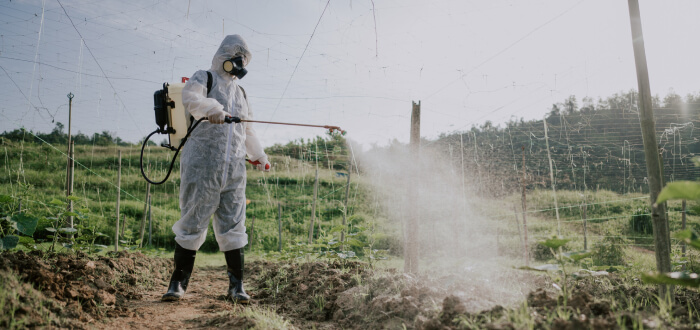We assume that the food we eat is safe. However, the 2020 Pesticide Residue Monitoring Report and Data from the U.S. Food and Drug Administration found that one in ten food samples had pesticide residues that violate legal limits. Over one-half of the food tested had pesticide residues from at least one pesticide. Unfortunately, our toxic torts attorney is not surprised. The results found in this report are consistent with the levels found in recent years.
What Are Tolerable Pesticide Residue Rates?
The fact that our food is contaminated with pesticide residue is one of the reasons that many Americans have decided to grow their own food or pay higher rates for organic food. The fact that the Environmental Protection Agency (EPA) sets “acceptable pesticide residue rates” is misleading. It implies there is a safe exposure level. However, is there truly any exposure to pesticides that is safe?
A problem with setting pesticide tolerances is that the calculations used may not adequately represent specific sections of our population. For example, children, elderly individuals, and people with specific health conditions may be at a higher risk of developing adverse conditions from pesticide exposure from the foods they consume.
Furthermore, some of the food groups might be consumed at higher rates by certain groups. Therefore, the “accepted tolerance” for pesticide residues on food could put certain groups at a much higher risk for developing illnesses or health conditions from the exposure.
How Contaminated Is Our Food With Pesticide Residue?
The FDA sampled fewer foods for the most recent report because of the pandemic. There were 2,078 samples tested for the 2020 report. Most samples were imported foods (1,762), with just 316 samples from domestic producers. Roughly 59% of the domestic foods tested positive for at least one pesticide, with 3.2% violating the EPA pesticide tolerances. One-half of the imported foods tested positive for at least one pesticide, with 11.6% of the samples violating the EPA standards.
Some of the most common types of pesticide residues found on foods included:
- Bee-killing neonicotinoids, including acetamiprid, imidacloprid, and thiamethoxam
- Chlorpyrifos (which is banned from use in agriculture)
- Glyphosate
Effects of Pesticides
The adverse effects of pesticides on human health depend on the type of pesticide consumed. The EPA conducts human health risk assessments for many pesticides. Some pesticides could cause skin irritations or affect the nervous system. However, some pesticides are known carcinogens.
If a pesticide injures someone, they might have a civil claim against the manufacturer or other parties. However, the injured party has the burden of proving their legal claim. They must prove the manufacturer or other party owed them a legal duty of care to act with reasonable caution and concern. Then, there must be evidence that the party breached that duty of care. The injured party must link the breach of duty directly to the cause of their injuries and damages.
Schedule a Free Consultation With Our Colorado Toxic Torts Attorney
Toxic pesticide residues can cause catastrophic health conditions and wrongful deaths. Call our law firm for a free consultation with an experienced toxic torts attorney if you have been exposed to pesticides or other toxic substances and suffered harm.

